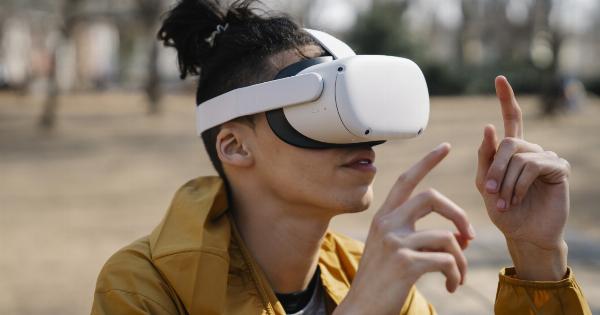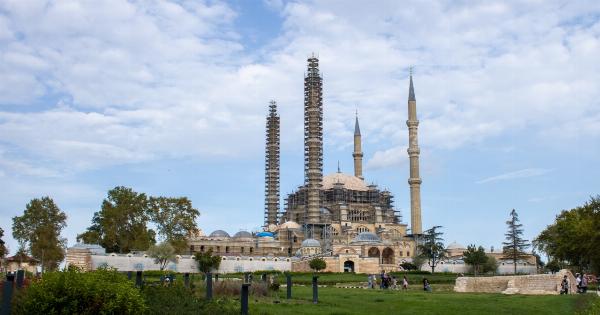Desire is a powerful force that drives human behavior. Erotic desire, in particular, has been a subject of fascination and exploration throughout history.
From the ancient Greeks to the modern era, erotic desire has had a profound impact on human lives and society as a whole. Yet, the understanding and acceptance of erotic desire has gone through many transformations over the years, with periods of openness and acceptance followed by periods of repression and condemnation.
This article explores the fall and rise of erotic desire throughout history.
The Ancient Greeks
For the ancient Greeks, erotic desire was a natural and celebrated part of life. They believed that desire was a gift from the gods and something to be embraced and celebrated.
The Greeks saw erotic desire as a force that could inspire creativity and bring individuals closer together. Same-sex relationships were also accepted and celebrated, particularly between older men and young boys.
The Rise of Christianity
With the rise of Christianity in Europe during the Middle Ages, attitudes towards erotic desire changed dramatically. The Church’s teachings on sex and desire viewed them as sinful and lustful, something to be avoided rather than embraced.
Sexual relationships were only acceptable within the confines of marriage and even then, the focus was on procreation rather than pleasure. Same-sex relationships were viewed as abominations and punishable by death.
The Renaissance
The Renaissance brought about a renewed interest in the arts and humanities, including the exploration of erotic desire.
Artists like Michelangelo and Leonardo da Vinci celebrated the beauty of the human body, both male and female, in their works of art. The concept of courtly love emerged during this period, which celebrated the idea of romantic love between a man and a woman.
The Victorian Era
The Victorian era is known for its strict moral codes and sexual repression. Society’s focus was on conformity and conservative values, with any expression of erotic desire strongly discouraged.
Sex was only acceptable within the confines of marriage and even then, it was seen as something shameful and taboo. Violence and exploitation were commonplace in the sex trade, but it was rarely talked about in public.
The Sexual Revolution
The sexual revolution of the 1960s and 1970s saw a dramatic shift in attitudes towards erotic desire. The emphasis was on sexual liberation and freedom of expression, with individuals free to explore their desires without fear of condemnation.
Same-sex relationships were gradually becoming more accepted, and the feminist movement encouraged women to take control of their own sexuality. The proliferation of birth control also made it easier for individuals to engage in sexual activity without the fear of unwanted pregnancies.
The Present Day
Today, attitudes towards erotic desire continue to evolve. While society is generally more accepting of diverse expressions of sexuality, discrimination and prejudice still exist.
Same-sex marriage is legal in many countries, but there is still a long way to go in terms of creating an inclusive and accepting society for all individuals, regardless of their sexual orientation. Consent and respect are now seen as essential aspects of sexual expression, while exploitation and abuse are rightfully condemned.
The Importance of Understanding Our Desires
The fall and rise of erotic desire throughout history highlights the power of societal and cultural attitudes to shape our behavior.
While some periods of history have been more accepting of erotic desire than others, it is clear that this powerful force has always been a part of the human experience. Understanding and embracing our desires is essential to our physical and emotional well-being, and to living a fulfilling life.
By understanding our desires, we can achieve greater self-awareness and self-acceptance, and build stronger, healthier connections with others.
The Future of Erotic Desire
As our society continues to evolve and change, it is difficult to predict what the future of erotic desire will look like.
It is likely that attitudes towards same-sex relationships will continue to become more accepting, while the focus on consent and respect will become even more central to sexual expression. Advances in technology, such as virtual reality and sex robots, may also create new opportunities for individuals to explore their desires in ways that were previously impossible.
Conclusion
Erotic desire has played a significant role in shaping human behavior and society throughout history. From its celebration in ancient Greece to its repression in the Victorian era, attitudes towards erotic desire have varied widely over time.
The rise of the sexual revolution marked a significant shift in attitudes towards erotic desire, but there is still work to be done in creating an inclusive and accepting society for all individuals. By understanding and embracing our desires, we can achieve greater self-awareness and build stronger, healthier connections with others, creating a more fulfilling and satisfying life for ourselves and those around us.


























